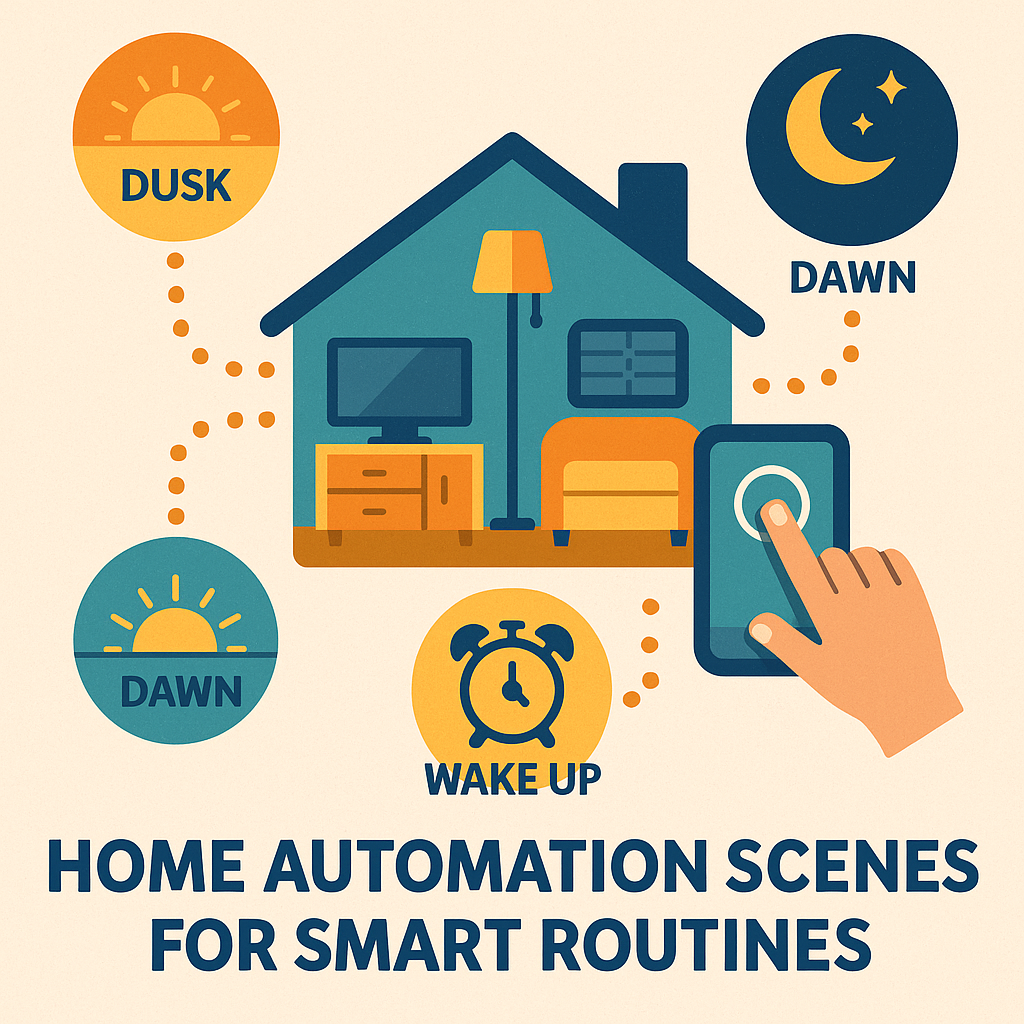What Are Home Automation Scenes?
One of the classic concepts in home automation is the scene. A scene is a preset that updates the states of multiple devices at once, saving you from juggling switches and apps.
Think of a theater scene: the television powers on, your speakers adjust to the right volume, the shades close, and the lights dim. One command, everything set.
Scenes are powerful—but designing them takes planning. Here’s how to think about scenes in any other automation platform.
Why Home Automation Scene Planning Is Tricky
Planning automations is one of the hardest parts of a smart home setup. You need to figure out:
- The trigger (time, motion, button, or voice)
- The devices involved
- The desired states
Home Assistant, like many platforms, makes this a little easier: you can set your devices the way you want them, then capture those states into a scene. Later, you can resume them all with a single action.
It sounds simple, but when you have dozens of lights, locks, and plugs, execution can be complicated.
Everyday Home Automation Scenes Worth Creating
You don’t have to start with complex routines. A few simple scenes can transform your daily life:
- Dusk – Turn on outside lights, close blinds, and set indoor lighting levels.
- Dawn – Open blinds, turn off night lights, start the coffee maker.
- Good Night – Shut off lights, lock the doors, enable security devices.
- Wake Up – Gradually raise lights, play morning music, and turn on smart plugs.
The real value comes when you think about what you do every single day—and automate that.
My Example: The Good Night Home Automation Scene
Here’s what happens when I activate my Good Night scene:
- Turn on the noise machine to drown out background noises
- Turn off bedroom lights
- Turn off lights in other rooms
- Check whether the apartment door is locked
Instead of walking through my home flipping switches and checking locks, one tap (or a voice command) takes care of everything.
Home Automation Scenes Make Smart Homes Actually Smart
Scenes aren’t just a convenience—they’re the glue that makes a smart home feel intelligent. By grouping devices into routines like dawn, dusk, and good night, you replace dozens of manual actions with a single one.
Yes, automation planning is personal. Everyone’s home and habits are different. But with a little thought, you can design scenes that fit your life perfectly. And once you do, you’ll wonder how you ever lived without them.

